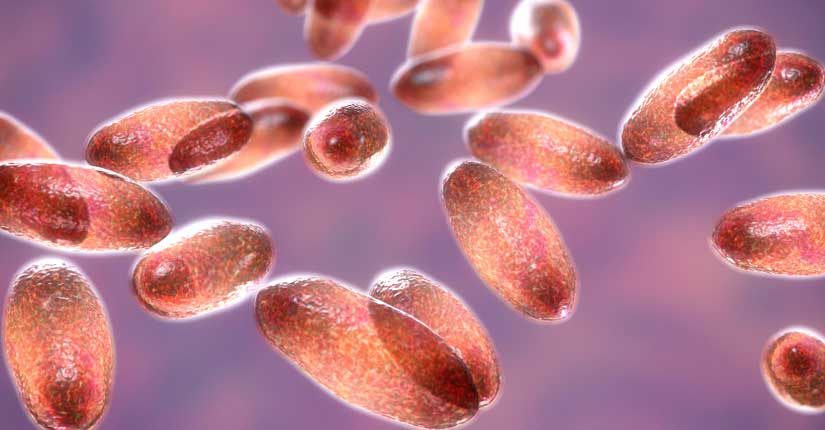Bubonic Plague Being Diagnosed in China- All You Need To Know
By Nmami Life Editorial 12-Jul 2020 Reading Time: 9 Mins

While the world is still finding a way to tackle the new coronavirus, an ancient disease has reared its head in China. On July 5, a herdsman in Inner Mongolia (a part of China) was diagnosed with bubonic plague and is receiving treatment at a hospital, Bayannur city health officials confirmed. Yes, that’s the same disease as the “black death,” which caused the most fatal pandemic recorded in human history, wiping out 30-50% of Europe’s population in the 14th century.
On the same day, the city commission issued a third-level alert (the second-lowest in a four-level system), which warns people against hunting, eating, or transporting potentially infected animals, particularly marmots (large ground squirrels). The alert stipulates that dead or diseased rodents, patients with suspected plague, and patients with high fever and unexplained death must be reported.
What is the plague?
The plague is a serious disease caused by the Yersinia pestis bacteria. The bacterium is carried by rodents, rabbits, coyotes, goats, sheep, and cats. In fact, more than 200 animal species can become infected with the plague, mentions The Center for Food Security and Public Health at Iowa State University.
The three forms of the plague are bubonic plague, septicemic plague, and pneumonic plague. Bubonic plague is by far the most common in humans, responsible for more than 80% of United States plague cases, per the Center for Disease Control and Prevention (CDC).
Symptoms
Septicemic plague patients also develop fever, chills, and weakness, as well as abdominal pain, shock, and possibly internal bleeding. In severe cases of septicemic plague, skin and other tissues may turn black and die, especially on the extremities (fingers, toes, and nose).
If you contract bubonic plague, you’re likely to develop a sudden onset of fever, headache, chills, and weakness, as well as swollen, tender lymph nodes.
Pneumonic plague is the least common form, but the most fatal. Patients develop fever, headache, weakness, and a rapidly developing pneumonia with shortness of breath, chest pain, cough, and sometimes bloody or watery mucus. Pneumonia may lead to respiratory failure.
On July 6, the neighboring country of Mongolia announced that it had lifted restrictions in Khovd Province after two cases of bubonic plague linked to the consumption of marmot meat were reported a week ago. Health officials confirmed that the patients’ conditions had improved, the Xinhuanet news site reported on July 1.
Reports of people diagnosed with bubonic plague are a few but not unheard of. In November, Xinhuanet reported a diagnosis of bubonic plague in an Inner Mongolia resident who hunted and ate a hare. He was treated in a hospital, and 28 people who had been in close contact with him were put under medical quarantine. The same week, two patients were diagnosed with pneumonic plague in Beijing—but no epidemiological association was found between the two cases, according to officials.
According to the Center for Disease Control and Prevention (CDC), an average of seven human plague cases has been reported in the US each year in recent decades. Scattered cases typically occur in rural areas—primarily northern New Mexico, northern Arizona, and southern Colorado, or California, southern Oregon, and far western Nevada.
There hasn’t been an urban plague epidemic in almost 100 years when the plague spread from rats in Los Angeles to rural rodent species from 1924 through 1925. But the new coronavirus has shown us how quickly a disease can be transmitted throughout the world, so how worried should we be?
Here are the facts about the bubonic plague, and if it poses a threat.
How does the bubonic plague get to spread?
Plague can be spread via a flea bite, direct contact with an infected animal, or inhaling the bacteria. A flea bite is the most common form of transmission, clarifies the CDC.
In bubonic plague cases, the bacteria multiply in the lymph node closest to where the bacteria entered the body. Septicemic plague also results from bites of fleas that have been previously infected with the plague bacteria, or from direct contact with the infected tissue or fluids of an infected animal. It sometimes develops from untreated bubonic plague.
Pneumonic plague is the only form that can be spread through inhaling infected respiratory droplets from one person to another. However, the CDC says human-to-human transmission is rare. Pneumonic plague can also develop from the untreated bubonic or septicemic plague that spreads to the lungs.
Is the plague treatable?
All forms of the plague are treatable, but early diagnosis and antibiotics are vital. If bubonic plague isn’t treated quickly, the bacteria can spread to other parts of the body and result in the more serious forms of the disease. The CDC recommends that after a patient is diagnosed with suspected plague, they should be hospitalized (and medically isolated, if the pneumonic plague is suspected). To prevent death from pneumonic plague, antibiotics should be given within 24 hours of the onset of symptoms.
Prevention
Because the most common cause of the plague is a flea bite, flea control and animal control are essential steps to prevent. If you rear cats, dogs, cattle, don’t let them roam free or hunt wild animals like rats, squirrels, or rabbits. The non-profit, independent Companion Animal Parasite Council recommends treating all dogs and cats with flea control products year-round for their entire life.
To get rid of rodents around your surroundings, follow control measures recommended by your local environmental health department. And you can protect yourself against flea bites by tucking your pants into your socks if outdoors and wearing gloves if you need to handle any animal with an open wound.
Over to you
The plague cannot become the next global pandemic as it is rare—particularly in urban areas. And health experts say there’s no chance of a global plague pandemic today because it’s easily prevented and treatment to cure it exists.

















